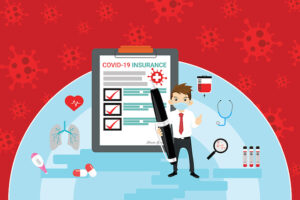While it might not net them the lowest price, Americans who are considering buying life insurance prefer to skip the physical exam in favor of simplified underwriting*, according to the 2017 Insurance Barometer Study.
In fact, 70% of Americans considering purchasing coverage expressed interest in the simplified route, drawn to the speed and ease it offers compared to fully underwritten policies.
Now in its seventh year, the Insurance Barometer Study tracks the financial perceptions, attitudes and behaviors of consumers in the U.S., with an emphasis on life insurance. LIMRA and Life Happens jointly conducted the study.
The current study looks at the life insurance buying process from the consumer’s point of view and finds that simplified underwriting may impact a consumer’s likelihood of completing the life insurance purchase. In addition to speed and ease, those interested in purchasing via simplified underwriting are influenced by these appealing benefits as well:
• 67%: risk and price transparency
• 66%: an unbiased application process
• 64%: no need for a medical exam
The key to closing the sale: Make it easy to understand
The study asked consumers to rate the importance of various factors when purchasing life insurance. Having a product that is “easy to understand” received top ranking with 83%. The “ability to chat with a person” was next (66%), while a “faster sign-up process” was very or extremely important to half of respondents (51%).
“Our research shows increasing interest among consumers for speed, ease and transparency in the life insurance purchasing process, including an evolving trend to buy online,” said Marvin Feldman, CLU, ChFC, RFC, president and CEO of Life Happens. “It’s interesting to see that this desire is universal, across all generations. A Baby Boomer is just as interested as a Millennial when it comes to making the online buying process fast and easy.”
Everyday technology is shaping consumer expectations of life insurance. There is an increased desire to purchase financial products, like life insurance, online. In fact, online life insurance purchase attempts have tripled since the Barometer’s inception in 2011.
Peer-to-peer purchasing
The 2017 Insurance Barometer Study expanded its reach and took a first-time look at peer-to-peer (P2P) insurance. P2P insurance is an emerging trend in the insurance industry. It utilizes P2P business models to provide coverage through a non-traditional experience geared towards online/mobile applications. Thirty percent of respondents say they would be open to purchasing life insurance via a P2P platform, if available.
“While P2P insurance platforms are still in their early stage, it’s a trend on the horizon that’s worth paying attention to,” said Jim Scanlon, senior research director at LIMRA. “Our research shows consumers value interacting with insurance companies in new ways such as simplified underwriting, P2P models and online sales. While the industry has been slow to adapt, we continue to see progress. For example, the percentage of completed online sales has increased by more than 15% in the past four years.”
Consumer expectation outpacing understanding
Expectations and preferences for purchasing life insurance are rapidly evolving. In contrast, consumers still lack an overall understanding regarding the cost of life insurance and who should own it.
Having dependents still signals the need for life insurance. However, there is a gap regarding the marital status of those with dependents. Only 60% of respondents indicate that a single person with one or more young children needs coverage, versus 80% of respondents who say the same of a married person.
Furthermore, consumers tend to overestimate the price of life insurance. This may deter those who believe it costs too much from purchasing. For instance, when asked how much a $250,000 term life insurance policy would be for a healthy 30-year-old, the median estimate was $500—more than three times the actual cost.
This lack of understanding leads to insufficient coverage. Nearly 40% of respondents say they wish their spouse or partner had more life insurance coverage. This has increased by 10% since the first Barometer Study in 2011. And while 85% of respondents agree that most people need life insurance, only 59% say they have life insurance.
Insufficient coverage has grave consequences for countless families. Four in 10 households without any life insurance would have immediate trouble paying living expenses if their primary wage earner died.
* For this survey, simplified underwriting is defined as making use of publically available data for risk classification decisions for life insurance pricing, enabling purchase without requiring blood and fluids for medical testing.
Study Methodology: The 2017 Insurance Barometer Study was fielded in January 2017 using an online panel, which surveyed 2,031 U.S. adults age 18-75. The data were weighted by age, gender, education, race, region, and income to be representative of the general population. A propensity score adjustment was added to correct for biases inherent in Internet panels. The margin of error in this study is 3 percentage points.
About Life Happens: Life Happens is a nonprofit organization dedicated to helping consumers take personal financial responsibility through the ownership of life insurance and related products. The organization does not endorse any product, company or insurance advisor. The organization supports the insurance industry by providing marketing tools and resources and convening the industry each September for Life Insurance Awareness Month. Life Happens is supported by more than 140 of the nation’s leading insurance company and financial services organizations. To learn more, visit www.lifehappens.org.
About LIMRA: LIMRA, a worldwide research, consulting and professional development organization, is the trusted source of industry knowledge, helping more than 850 insurance and financial services companies in 64 countries. Visit LIMRA at www.limra.com.













